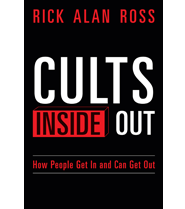The Second Ku Klux Klan: How It Gained Social and Political Power Among White Protestants
Published By admin
As Christmas break got underway at Ohio’s University of Dayton in December 1923, multiple bombs were set off across the campus. Local members of the Ku Klux Klan (KKK) had targeted the school because it was a Catholic institution, and Dayton at that time had both a large Catholic population and a lot of Klan members. Cross-burnings became so frequent that at one point the school’s football coach rounded up his players and sent them into a nearby cemetery to chase the perpetrators off. In Oregon a year earlier, members of the Klan had helped to successfully pass a bill to ban private schools, a thinly veiled attempt at prohibiting children from attending Catholic schools.
The KKK in the 1920s was one of the most powerful social movements among white Protestant Americans. While its members claimed they didn’t support bigotry and merely wanted to support American values, they held deep-seated nativist beliefs. In addition to virulent racism toward African Americans, they also held anti-Catholic, antisemitic, and anti-immigrant attitudes. To make themselves more politically palatable, they took on the trappings of a social club, hosting picnics and even putting together bands. The total number of people who joined is difficult to calculate, but estimates range in the low millions in the mid-1920s.
Today, as we live through a new resurgence of nativism and white backlash, we can learn a lot by looking back at the early history of the Ku Klux Klan.
The Ku Klux Klan was originally founded as a social club for Confederate veterans and was modeled on other secret societies; there were membership rituals and absurd titles like “Grand Wizard” or “Grand Cyclops.” By 1867, it became committed to violently resisting Reconstruction. Members assassinated politically active free Black people and white Southern sympathizers. Through violent voter intimidation, the Klan intimidated and attacked voters to gain control of state legislatures like Georgia’s, but was targeted by the federal government, which tried to eliminate the group through the Enforcement Acts. Thanks to federal prosecution and the end of Reconstruction in 1877, most Klan groups were disbanded.
In 1915, however, the Klan was revived. This new incarnation was inspired in part by D.W. Griffith’s The Birth of a Nation, a movie about Reconstruction. It presented a deeply racist view of that history, depicting African Americans as inept at government, incapable of being good citizens, and sexually threatening toward white women. It also romanticized the Klan, depicting them as protectors. It was enough to motivate William Simmons, who, as The Atlantic detailed, relaunched the Klan in Georgia and adopted the white sheets and hoods from the movie as the group’s new uniform. This version of the Klan is often called the second Klan, to distinguish it from the one that existed after the Civil War.
The second Klan’s membership initially remained small, but it began to grow in 1920, Thomas Pegram, PhD, an American history professor at Loyola University Maryland, told Teen Vogue. “They hired this public relations firm called the Southern Publicity Association,” he explained. “And they really push for an expansion of membership outside the South. The 1915 Klan basically existed in Alabama and Georgia and essentially it was tied to super patriotism during World War I. But the new Klan, they really went after [recruiting] white Protestants with fraternal organizations and Protestant churches.” Klan recruiters, called Kleagles, charged a $10 initiation fee to new recruits and were allowed to keep a portion of it, giving them an incentive to sign up as many people as possible. At one point, an estimated third of the white men in Denver were said to be Klan members, according to the Denver Post.
Outside events also fed the growth of the Klan. The 1917 Bolshevik Revolution in Russia stoked fears that a Communist takeover could happen in the United States in what became known as the Red Scare, the first of two in the US in the 20th century. The Great Migration saw millions of African Americans move from the South into Northern and Western cities looking for work. These new arrivals were joined by waves of immigrants from Southern and Eastern Europe. The summer of 1919 became known as Red Summer because of the sheer number of race riots that happened all over the country specifically targeting African Americans. Fears of social change and societal unrest stoked KKK membership drives beginning in 1920, which saw the organization balloon in size.
Content retrieved from: https://www.teenvogue.com/story/second-ku-klux-klan.






